In Vietnam, compared to other long-standing industries (such as mechanical engineering, electricity - electronics, chemicals, textiles...) the plastic industry is still quite new. However, in recent years, Vietnam's plastic industry has developed strongly, with an annual increase of 16% - 18%/year (only behind the telecommunications and textile industries). In particular, there are products whose growth rate is nearly 100%. With rapid development, the plastic industry is considered a dynamic industry in the Vietnamese economy. Therefore, the long-term orientation from 5 years to 10 years has been supported, planned in detail and worked together by the Government, Ministries and Enterprises across the country. The article below will suggest to readers the development trends of the Vietnamese plastic industry in the next 5 years. Check it out now with EuroPlas!
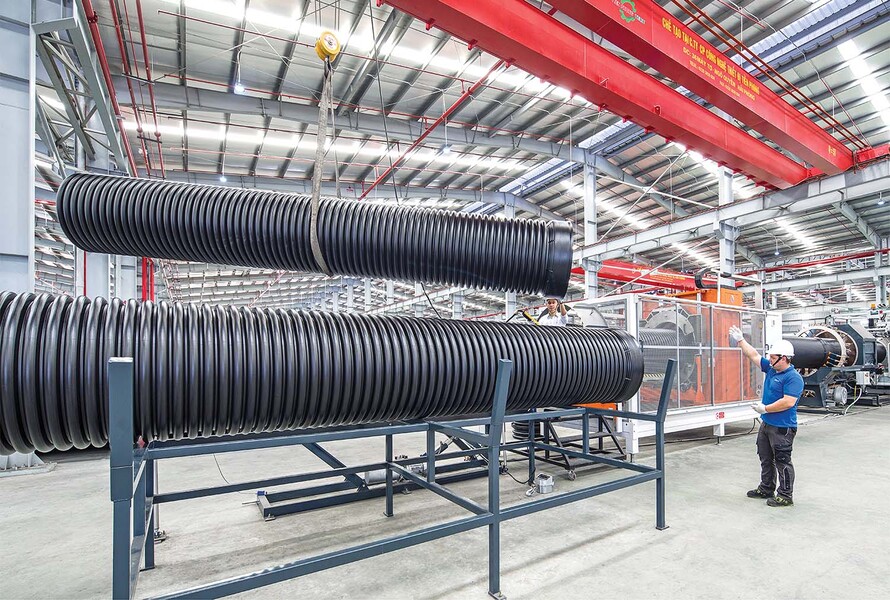
1. Current trends of Vietnam's plastic industry
In the first part, EuroPlas will introduce an overview of the current trends of Vietnam's plastic industry in recent years.
The Vietnam Plastic Association (VPA) has announced that: "The total number of businesses in the plastic industry is 4,000 businesses. In particular, private businesses account for nearly 98% of the total number across the country. This brings an abundant source of plastic products as well as easily promoting import and export activities globally."
In the past 5 years, the growth rate of the plastic industry has always reached double digits, from 12-15%/year. Up to now, Vietnam can produce materials such as PVC, PP, PET, PS, PE, with a total capacity of nearly 3 million tons/year.
To date, Vietnamese plastic products have been exported to more than 160 countries around the world and are present in demanding markets such as the US, Germany, France, UK, Italy, the Netherlands, Spain, and the community of European countries, Japan, Australia... In particular, most plastic products in the Vietnamese market will not be subject to anti-dumping taxes like other Asian countries. Currently, the average tax rate ranges from 8 - 30%.
Besides opportunities, Vietnam's plastic industry also faces challenges. Specifically:
-
Modern machinery, science and technology are important factors that reduce the quality of the plastic production and supply chain of Vietnamese enterprises. This stems from costs and human resources. However, we have gradually come up with solutions by expanding the application of modern technology such as: injection moulding technology, extrusion blow technology, 3D printing technology,...
-
Besides, the rapid development of the Chinese and Indian markets brings many worries to domestic businesses. However, the Government coordinates with Ministries and Agencies to implement specific strategies that not only expand international cooperation but also improve domestic production capacity.
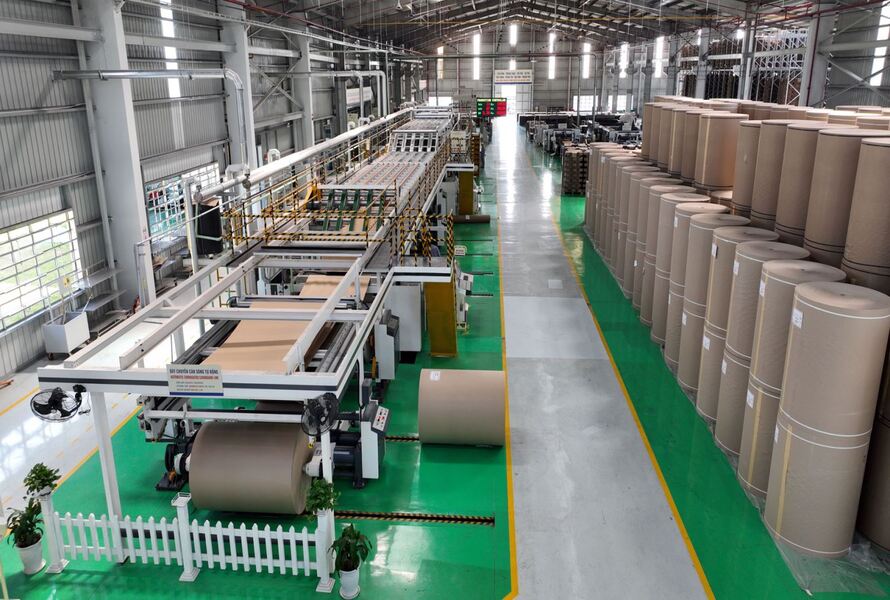
According to the Vietnam Plastic Industry Development Plan with a vision to 2025 of the Ministry of Industry and Trade, the plastic industry must shift its structure in the direction of gradually reducing the proportion of product groups with short lifespans and increasing the proportion of product groups with long lifespans. long. Typically, the reduction in the production of packaging and household plastics increases the production of construction material plastics and engineering plastics with special physical and mechanical properties used in construction and industrial activities.
The Government will introduce support policies for the plastic industry to promote production, investment and export; At the same time, guide plastic manufacturing businesses to implement environmental regulations and protect consumer health, and develop plastic industry product standards to protect Vietnamese manufacturers and consumers.
In our country, the main plastic production structure includes: Packaging plastic (39%), household plastic (32%), construction plastic (14%), engineering plastic (9%) and other plastics (6 %). According to statistics, to meet the domestic and export markets, each year Vietnam's plastic industry needs to import millions of tons of raw materials such as PE, PP, PS... However, the current domestic capacity can only meet about 15-20% of raw material needs. Each year, Vietnam's plastic industry needs an average of 2 - 2.5 million tons of raw materials, but has to import 75 - 80%. This also leads to an increase in input material costs. The peak is when this cost accounts for nearly 70% of production costs.
Vietnamese plastic industry enterprises need to proactively restructure investment or strengthen research capacity, focus on investing in machinery, according to new technology standards; Reduce dependence on foreign raw materials, diversify designs, improve competitiveness in quality and reduce product costs...
This is a development roadmap for the next 5 - 10 years that Vietnamese businesses need to strictly follow and act with determination, effort and discipline. We also need to know the prospective trends of the future to have the best preparation. In the next section, EuroPlas will introduce 4 trends that are expected to grow dramatically in the plastic industry in Vietnam in the next 5 years. Do not miss it!
2. Future trends of the domestic plastic industry
The plastic industry is considered one of the important links contributing to the overall development of the green economy. According to the Vietnam Plastic Industry Development Plan with a vision to 2025 of the Ministry of Industry and Trade, the plastic industry must shift its structure in the direction of gradually reducing the proportion of product groups with short lifespans and increasing the proportion of product groups with long lifespans. long. Typically, the reduction in the production of packaging and household plastics increases the production of construction material plastics and engineering plastics with special physical and mechanical properties used in construction and industrial activities.
2.1. Development trends of packaging plastic
Consumer income and spending levels will directly affect the demand for output products of packaging plastic. Vietnam currently has about 14,000 packaging businesses. Of which, plastic packaging accounts for about 9,200 businesses. We estimate that the growth of the plastic packaging segment in 2023 in Vietnam will lie in the growth of spending on food and non-alcoholic beverages.
The plastic packaging trend is expected to become very popular because this is a minimalist trend and maximises reuse of used plastic materials on the market.
Besides, plastic packaging will be divided into 2 main groups. First, plastic packaging is produced from the PE plastic group. This is an outstanding material with 3 characteristics, specifically as follows: waterproof, non-electrical and non-thermal. In particular, the heat tolerance of the material reaches nearly 230 degrees Celsius.
The second material line for producing plastic packaging products is the PP plastic group. Polypropylene plastic is a polymer material that is highly appreciated for its mechanical characteristics. In addition, packaging made from PP material has very good durability because of its heat resistance from 130 degrees Celsius - 170 degrees Celsius, long-term oxidation resistance as well as water and gas resistance. Therefore, plastic packaging will be very easy to apply in daily life and the production cost is not too expensive, this has met the criteria of environmental protection, developing a green economy and improving the environment. The importance of plastic products.
2.2. Development trends of technical plastics
Plastic is not only used in daily life but also contributes to the development of technical products. Engineering plastics (also known as Compound) are a combination of traditional plastic substrates (PP, ABS, PC,...) with appropriate reinforcements and additives in the form of masterbatch. The special feature of this material is that there is no fixed formula or ingredient ratio.
The growth trend of the engineering plastics segment depends mainly on the automobile industry and the electrical and electronics industry. The auto industry is expected to still face difficulties due to the global chip shortage. Engineering plastics also contribute to protecting the environment and largely reducing emissions from vehicles because they will help significantly reduce the weight of the vehicle, so the vehicle will consume less fuel.
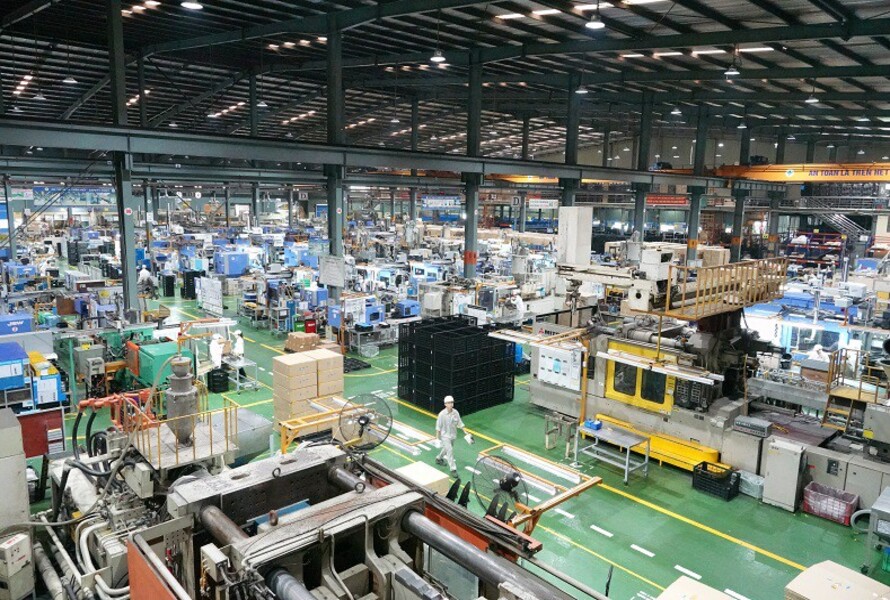
At the same time, large corporations in the industry are planning to move or restructure production chains towards "China +1". It is expected that Vietnam (geographical location near China) will be an attractive investment destination in the policy of diversifying the global supply chain and production.
In the context of automation technology being strongly promoted, electric cars and self-driving cars are also being researched by many countries, typically the Vinfast brand of Vietnam. This is the premise for technical plastic materials to maximise their strength and utility. Not only that, this trend is also developing exactly with the orientation of the Ministry of Industry and Trade and the Vietnam Plastics Association setting a target until 2030.
2.3. Trends in bioplastic development
In context, climate change and environmental impacts will drastically change global consumption trends. In particular, plastic almost appears in many products and accounts for up to 70%, because if the plastic industry does not change and develop, plastic waste will become an unsolvable problem.
That is the reason why countries are making efforts to develop and produce bioplastics. The global market research organisation Mordor Intelligence has researched and shown statistics that: "Bioplastics are the key trend of the plastic industry in the future. They are expected to achieve impressive growth rates." from 1.78 million Kiloton in 2023 to 3.95 million Kiloton in 2028, equivalent to nearly 18% in just 5 years."
Most of the components of bioplastics originate from nature such as coffee grounds, potatoes, etc. Besides, bioplastics also possess properties similar to conventional plastics such as: heat resistance, water resistance. permeability, hardness, impact resistance and flexibility in the production process, adapting to a variety of heavy industry fields.
Bioplastics also fully meet the criteria for the strategy of reducing plastic waste and emissions globally, thereby strongly promoting the green consumption trend for global brands. Bioplastics combined with the trend of plastic packaging products will largely change the consumer trends and behaviours of many countries. For example, the number of non-recyclable nylon bags is completely replaced by bioplastic bags in retail systems, supermarkets,...
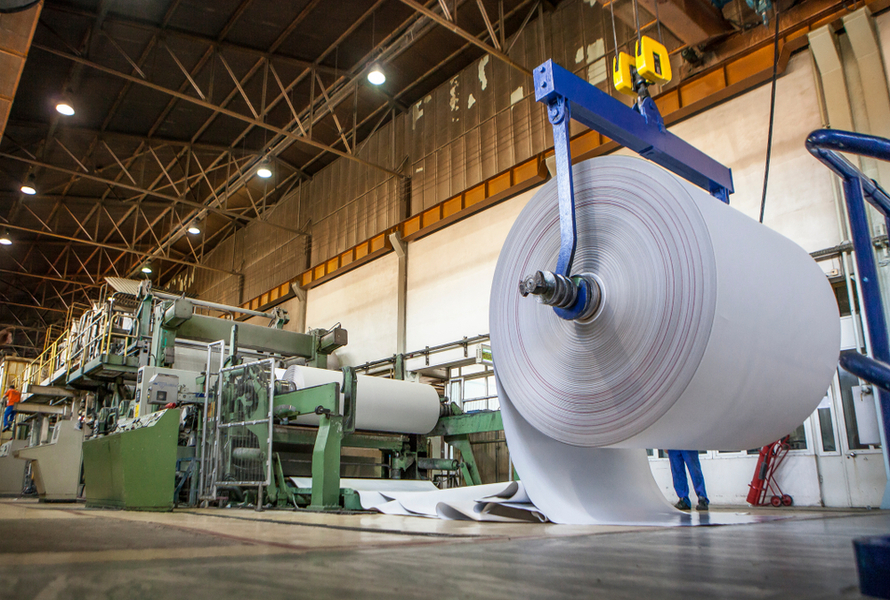
Currently, we can see that many F&B brands such as Starbucks, Phuc Long,... have changed important items such as: paper bags, bioplastic straws, paper cups,... to completely eliminate All toxic plastic out of the store system. Motor Intelligency's plastic industry report also gives parameters to prove the importance of bioplastics: "The amount of plastic waste globally is about 300 million tons / year, of which 13 million tons are discharged into the sea. If bioplastics are widely used, that number will gradually decrease by 2 - 3% each year. However, to make that happen, the Vietnamese Government needs to implement these measures and a strategy of sustainable cooperation with the international community."
A typical example is the biggest expectation of the Vietnamese plastic industry today is the free trade agreements that Vietnam has signed, especially the EVFTA Agreement. “After EVFTA came into effect, tariffs on most plastic products exported to the EU market were removed. This is a great advantage to increase the output of export plastic products of the Vietnamese plastic industry with an important market, the EU.
We can see that Vietnam's plastic industry faces many opportunities to strongly promote "green" development trends in the future. However, we cannot be negligent because there are still many challenges that the Government, businesses and Ministries and Agencies need to overcome.
Vietnam needs to accelerate the application of modern technology in the production chain, management and supply of plastic products globally. We must continue to expand international agreements because the number of domestic private enterprises is approaching 90%. Furthermore, the Government will coordinate with the Vietnam Plastics Association to offer support policies to promote production, investment and export.
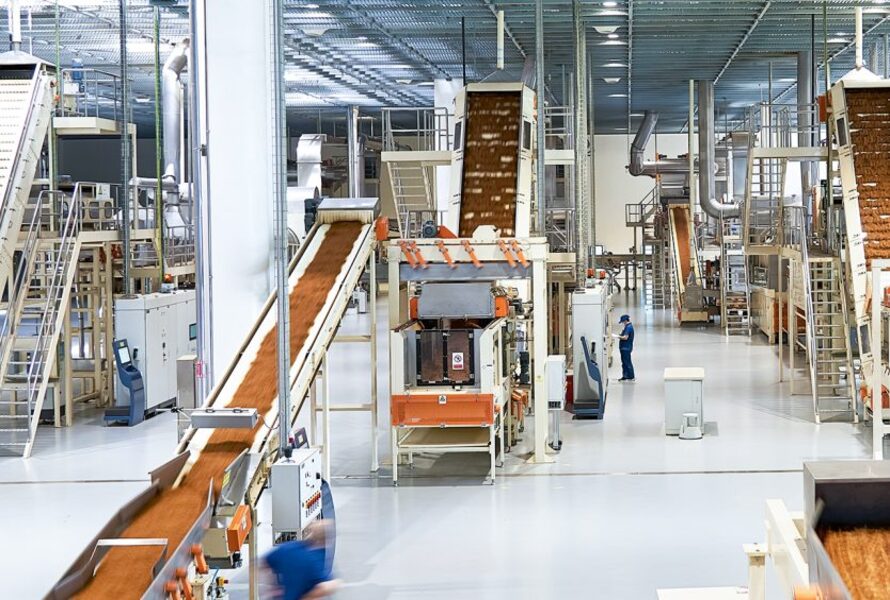
Businesses should also regularly organise seminars on environmental protection and consumer health safety. This is an opportunity for them to exchange experience, knowledge and technology to together bring the best plastic products to the market. As one of the businesses in the plastic field, EuroPlas constantly strives to dedicate, train and develop resources to improve the quality of its products.
3. Introduction to EuroPlas
EuroPLas is proud to be one of the largest Filler Masterbatch manufacturers in the world and brings optimal bioplastic products to help businesses improve their competitive position in the market.
EuroPlas' mission is to provide optimal, environmentally friendly material solutions to contribute to increasing competitive advantages for businesses. Therefore, EuroPlas constantly strives to become the world's leading enterprise in the field of supplying plastic raw materials.

Currently, EuroPlas has 7 factories with a scale of dozens of hectares in 6 provinces and cities: Ha Nam - Yen Bai - Hai Phong - Nghe An - Long An and Ho Chi Minh City. The factories are equipped with a modern production line system that meets European standards, so each year we are capable of supplying up to 0.8 million tons to meet the great demand of customers nationwide.
In addition, EuroPlas is also a strategic partner of thousands of factories in more than 95 countries globally. Established since 2007, EuroPlas has been proving its capabilities with a team of dedicated and professional personnel.
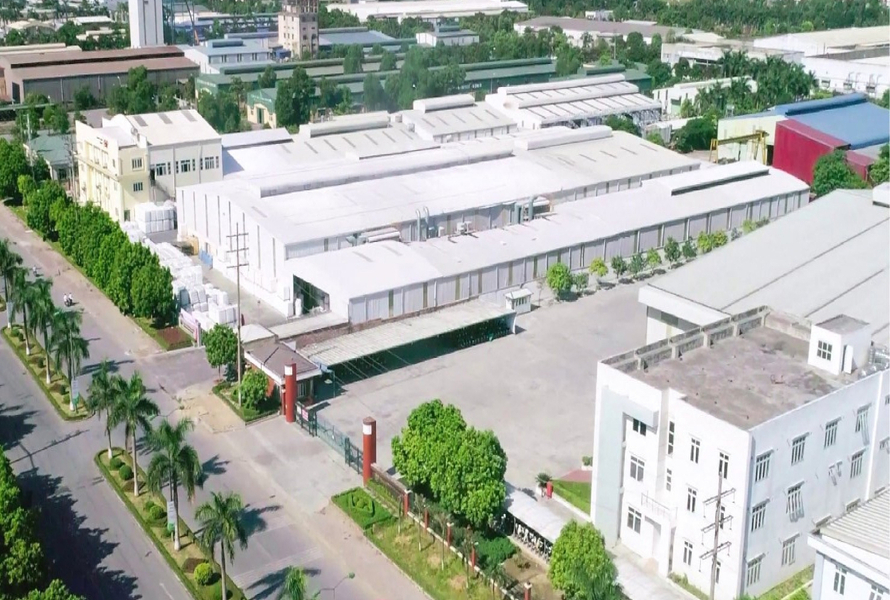
EuroPlas introduced readers to the development trends of Vietnam's plastic industry in the next 5 years. Please continue to follow and accompany EuroPlas to contribute to the development and expansion of bioplastics globally!